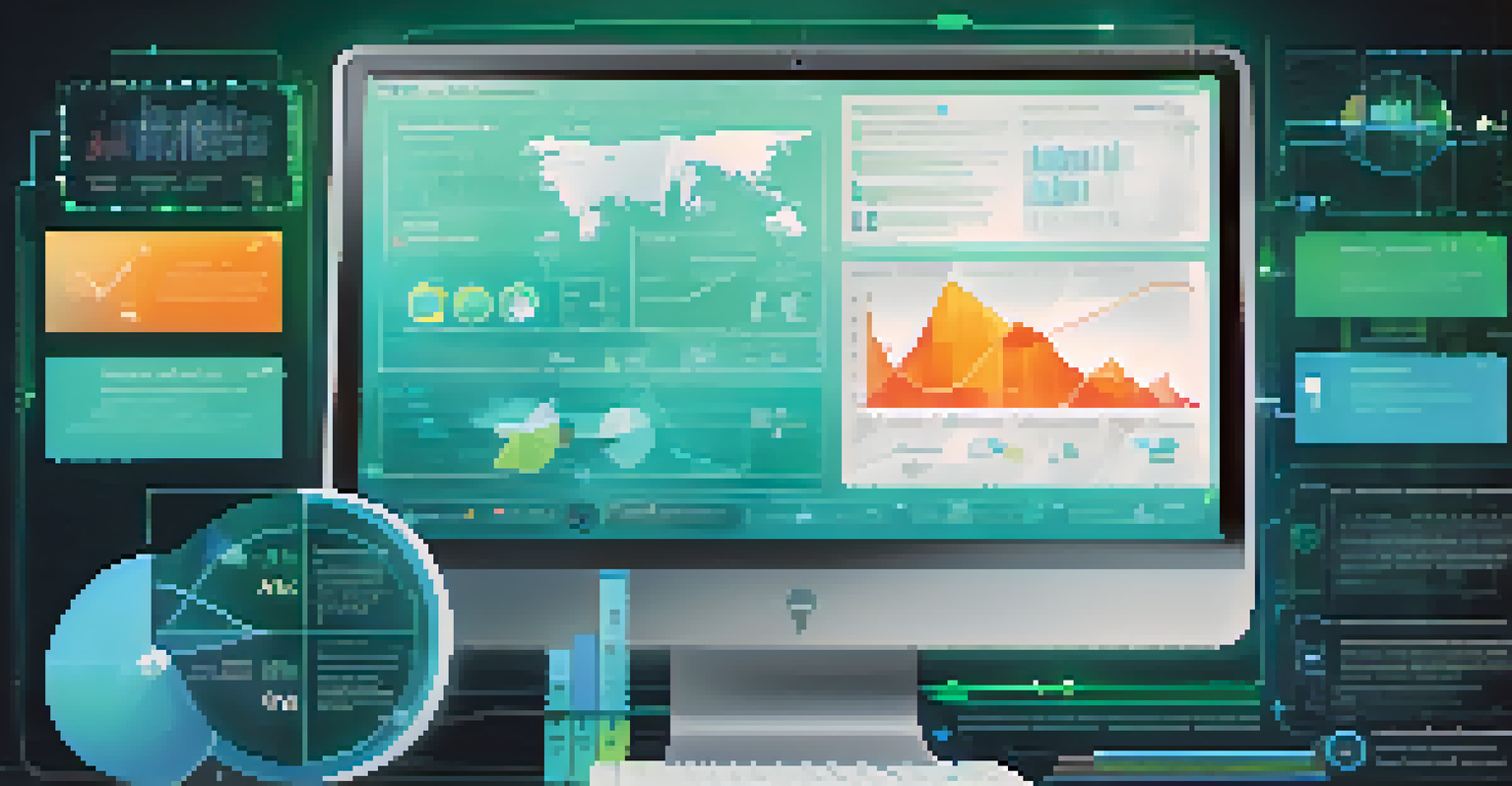The Importance of Data Collection in Learning Analytics

Understanding Learning Analytics and Its Goals
Learning analytics refers to the measurement, collection, and analysis of data related to learners and their contexts. The primary goal is to understand and improve the learning process by making informed decisions based on this data. This involves not just academic performance, but also student engagement, motivation, and other factors that influence learning outcomes.
Data is the new oil.
By utilizing learning analytics, educators can identify trends and patterns that may not be apparent through traditional assessments. For example, if a group of students consistently struggles with a particular subject, educators can investigate the underlying causes. This proactive approach enables personalized support tailored to individual needs, creating a more effective learning environment.
Moreover, learning analytics helps institutions to allocate resources more efficiently. When data reveals specific areas where students need assistance, schools can direct funding and support to those areas, ensuring that help reaches students who need it most. This strategic use of data ultimately enhances the overall educational experience and promotes student success.
The Role of Data Collection in Educational Settings
Data collection is foundational to learning analytics; without accurate data, insights and decisions are built on shaky ground. In educational settings, various data types are collected, including grades, attendance records, and engagement metrics from online learning platforms. Each piece of information contributes to a comprehensive picture of student performance and behavior.

For instance, tracking attendance alongside performance metrics can reveal whether consistent attendance correlates with better grades. Such insights can drive interventions, such as attendance incentives or targeted outreach for students who may be falling behind. By systematically collecting and analyzing this data, educators can create a more responsive and adaptive learning environment.
Personalization Enhances Learning
Data analytics allows educators to tailor instruction to individual student needs, improving engagement and outcomes.
Furthermore, data collection fosters a culture of continuous improvement within educational institutions. When data is routinely analyzed and shared among faculty, it encourages collaboration and collective problem-solving. This collaborative approach can lead to innovative teaching strategies that enhance student engagement and boost academic achievement.
Types of Data Collected in Learning Analytics
In learning analytics, data can be categorized into several types, each serving a unique purpose. Quantitative data includes numerical information such as test scores and attendance rates, while qualitative data encompasses more subjective insights, like student feedback or surveys. Together, these data types provide a holistic view of the learning experience.
Without data, you're just another person with an opinion.
For example, quantitative data might indicate that students are struggling with a particular module, while qualitative feedback could reveal that they find the content confusing or unengaging. This combination of data allows educators to pinpoint specific issues and make informed adjustments to their teaching methods. The interplay between different data types creates a richer understanding of the learning landscape.
Additionally, data can be collected from various sources, including learning management systems, social media, and even classroom interactions. By leveraging diverse data sources, educators can gain deeper insights into student behavior and learning patterns, ultimately leading to more effective instructional techniques.
Ethical Considerations in Data Collection
While data collection in learning analytics offers significant benefits, it also raises important ethical considerations. Privacy concerns must be addressed to ensure that student data is collected and used responsibly. Institutions must establish clear protocols to safeguard sensitive information and maintain student confidentiality.
Moreover, transparency is key in building trust with students and parents. When educational institutions communicate how data will be used and the benefits it brings, stakeholders are more likely to feel comfortable with data collection practices. This transparency fosters a collaborative atmosphere where students feel valued and understood.
Ethics in Data Collection Matters
It's crucial for educational institutions to prioritize privacy and transparency in data collection to build trust with students.
Finally, ethical data collection involves ensuring that data is used to support, rather than penalize, students. The goal of learning analytics is to enhance the educational experience, not to create a punitive environment. By prioritizing ethical practices, institutions can harness the power of data while maintaining integrity and trust.
Using Data to Personalize Learning Experiences
One of the most exciting applications of data collection in learning analytics is the ability to personalize educational experiences. By analyzing individual student data, educators can tailor instruction to meet each learner's unique needs, preferences, and strengths. This approach leads to more engaging and effective learning outcomes.
For instance, if data shows that a student excels in visual learning but struggles with textual information, educators can incorporate more visual aids into their teaching. Personalized learning paths can also be created, allowing students to progress at their own pace while focusing on areas where they need the most support.
Personalization not only enhances academic performance but also boosts student motivation and confidence. When learners see that their unique needs are being addressed, they are more likely to engage actively in their education. This shift from a one-size-fits-all approach to a more individualized strategy represents a significant advancement in educational practices.
Challenges of Data Collection in Learning Analytics
Despite its advantages, data collection in learning analytics is not without challenges. One major hurdle is the sheer volume of data that can be overwhelming for educators and administrators. Sifting through extensive datasets to find actionable insights requires time, resources, and expertise that may not always be available.
Additionally, ensuring data accuracy can be a significant challenge. Inaccurate or incomplete data can lead to misleading conclusions, potentially harming students rather than helping them. Establishing robust data collection methods and regular audits can help mitigate these risks, ensuring that the data being analyzed is reliable and valid.
Challenges in Data Management
The volume and accuracy of data can pose significant challenges, necessitating robust collection methods and integration strategies.
Finally, integrating data from various sources can be complex. Many institutions use different systems that may not communicate well with one another, leading to silos of information. Overcoming these integration challenges requires investment in technology and training, but the payoff is a more cohesive understanding of student learning.
The Future of Data Collection in Learning Analytics
As technology continues to evolve, the future of data collection in learning analytics looks promising. Emerging tools and platforms are enhancing the ability to gather and analyze data more efficiently than ever before. This means that educators will have access to real-time insights, allowing for even quicker adjustments to teaching strategies.
Moreover, the integration of artificial intelligence (AI) and machine learning is set to revolutionize how data is processed. These technologies can identify patterns and trends that may not be immediately apparent, helping educators make data-driven decisions that improve student outcomes. The potential for predictive analytics is particularly exciting, as it could enable early intervention for students at risk of falling behind.

Ultimately, the future of data collection in learning analytics lies in its ability to create more personalized, responsive, and effective educational experiences. By embracing these advancements, educational institutions can not only enhance learning outcomes but also foster a culture of continuous improvement and innovation.